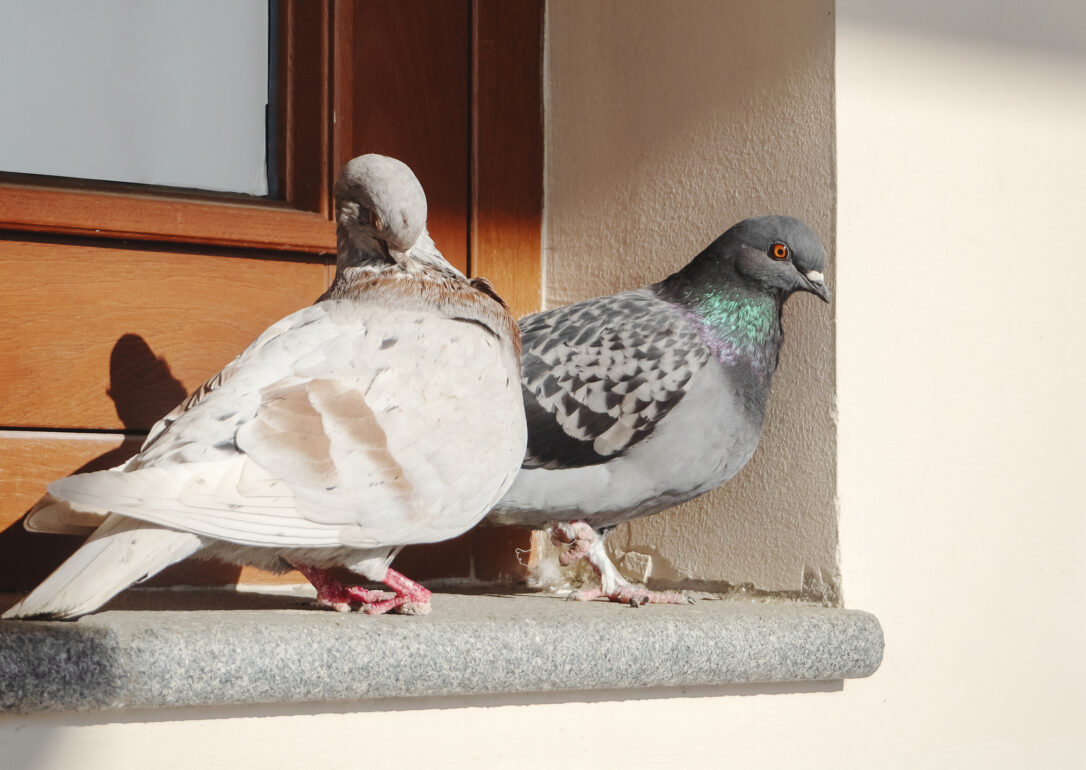In the realm of property management, particularly for commercial properties, bird control stands as a pivotal concern. Birds can pose significant challenges and disruptions, necessitating effective and humane control methods. This guide will expound upon various proven bird control strategies and methodologies designed to address and alleviate bird-related issues in commercial properties.
Methodologies for Bird Control in Commercial Environments
Strategic implementation of bird control methodologies is crucial for maintaining the structural integrity and aesthetic value of commercial properties. The following segments provide extensive insights into viable bird control methods.
Bird Netting
Bird netting acts as a physical barrier that prevents birds from accessing specific areas. It is one of the most effective and humane methods of bird control. Utilizing high-quality and durable netting material ensures longevity and optimal performance, preventing the perching and nesting of birds on building structures and other surfaces.
Spikes and Deterrents
Bird spikes deter birds from landing on ledges, signs, and other surfaces, preventing roosting and nesting. Stainless steel and polycarbonate spikes are preferred for their durability and effectiveness. Bird deterrents also include optical gel, which refracts light and appears as flames to birds, deterring them from approaching the treated surfaces.
Bioacoustic Bird Deterrent Systems
Bioacoustic systems utilize distress and predator calls to create an inhospitable environment for birds. These sounds are programmed to target specific bird species, ensuring minimal disturbance to non-target species and humans. It’s a non-lethal method that modifies the behaviour of birds, discouraging them from inhabiting certain areas.
Laser Bird Deterrents
Laser bird deterrents leverage advanced technology to discourage birds from inhabiting commercial areas. The technology emits light beams that birds perceive as a threat, causing them to vacate the premises. It’s a modern, humane, and efficient method, suitable for both indoor and outdoor applications.
Falconry-Based Bird Control
Falconry involves the use of trained birds of prey to deter pest birds from the vicinity. It is a natural and environmentally friendly approach, leveraging the predatory instincts of raptors to control bird populations around commercial properties.
Chemical Deterrents
Chemical deterrents, such as Avitrol, work by affecting the nervous system of birds, causing distress symptoms. This method alters the birds’ behaviour, discouraging them from residing in the treated areas. These deterrents require careful handling and application, adhering to guidelines and regulations to mitigate risks to non-target species.
Advantages of Effective Bird Control
Implementing effective bird control strategies yields numerous benefits, including the protection of property, mitigation of health risks, and preservation of aesthetic value. By addressing bird-related issues promptly and effectively, commercial property owners can maintain a conducive and appealing environment for both occupants and visitors.
Protection of Property and Assets
Bird droppings and nesting materials can lead to structural damage and increased maintenance costs. Effective bird control preserves the structural integrity and functionality of commercial properties, protecting assets from corrosion, deterioration, and other forms of damage.
Health and Safety Enhancement
Bird droppings can harbour pathogens responsible for various diseases, posing significant health risks to humans. Effective bird control mitigates these risks by preventing the accumulation of droppings and reducing the likelihood of disease transmission.
Aesthetic Preservation
Birds can compromise the aesthetic appeal of commercial properties through droppings, nests, and other debris. Maintaining a bird-free environment ensures the preservation of property aesthetics, enhancing the overall visual appeal and attractiveness of the premises.
Bird Control Implementation Diagram
This diagram illustrates the process of implementing bird control methods, from initial assessment to achieving optimal control, emphasizing the need for continual monitoring and adjustment to ensure sustained effectiveness.
Conclusion
Navigating the complexities of bird control in commercial properties requires a meticulous and multifaceted approach. By integrating humane and effective bird control methods, such as bird netting, spikes, bioacoustic systems, laser deterrents, falconry, and chemical deterrents, property managers can address bird-related challenges proactively. The resultant benefits include the preservation of property value, enhancement of health and safety standards, and maintenance of aesthetic appeal, contributing to the overall well-being and satisfaction of occupants and visitors. Regular monitoring and adjustments are paramount to ensuring the enduring success of bird control initiatives, enabling commercial properties to thrive in a bird-free environment.
Frequently Asked Questions
1. What is the most humane method for bird control in commercial properties?
The most humane methods include bird netting, bioacoustic bird deterrent systems, and falconry-based bird control, as these methods do not harm the birds and only deter them from inhabiting certain areas.
2. How can commercial properties maintain aesthetic appeal while implementing bird control methods?
Opting for discreet and aesthetically pleasing bird control options like bird netting, and ensuring that spikes, deterrents, and other visible measures blend seamlessly with the property’s exterior, help in maintaining aesthetic appeal while implementing bird control methods.
3. Are chemical deterrents safe for use around humans and pets?
Chemical deterrents should be used with caution and according to manufacturer guidelines to mitigate risks. They are designed to be safe when applied correctly, but improper use can pose risks to non-target species, including humans and pets.
4. Can multiple bird control methods be implemented simultaneously?
Yes, integrating multiple bird control methods can often yield the best results, as it addresses bird-related issues more comprehensively, covering various species and behaviour patterns.
5. How often should bird control measures be monitored and adjusted?
Regular monitoring and adjustments are crucial to ensure the effectiveness of bird control measures. The frequency may vary based on the chosen method and the severity of bird activity, but monthly inspections and adjustments are generally recommended to maintain optimal control.
You may also enjoy reading this article
Was This Article Helpful?
- Please provide feedback and comments to help us improve our content.
- Share your experiences and any additional tips you have for dealing with pests.
Share this Post



